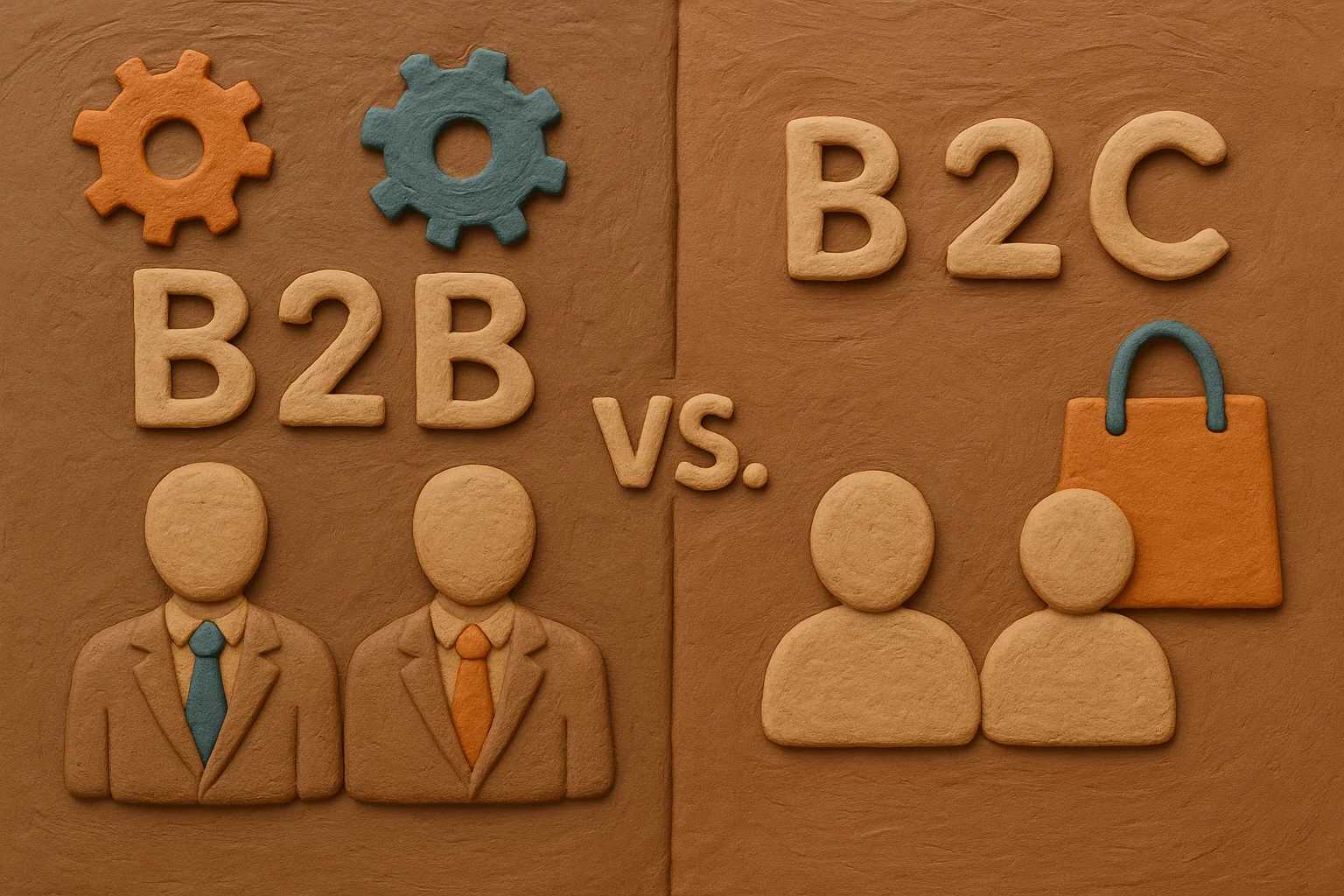Pay-per-click (PPC) advertising is one of the most effective ways to generate traffic, leads, and revenue—but the strategy changes drastically depending on whether you’re targeting businesses or consumers. Understanding the difference between PPC for B2B vs. B2C is key to maximizing ROI, reducing waste, and aligning your messaging with the right audience.
In this article, we’ll break down the major differences, campaign considerations, and how to adapt your approach for each.
Why PPC Strategy Needs to Change by Audience Type
At a high level, B2B (business-to-business) and B2C (business-to-consumer) campaigns differ in terms of:
- Sales cycle length
- Audience behavior
- Decision-making process
- Keyword intent
- Budget dynamics
Let’s explore each in more detail.
1. Target Audience Behavior
B2B PPC:
- Your audience includes professionals, executives, and decision-makers.
- Targeting is often based on job title, industry, or company size.
- Users conduct more research before converting.
- Multiple stakeholders may be involved in the buying decision.
B2B Tip: Use LinkedIn targeting (when available) or custom audiences based on company lists. Leverage long-tail keywords like “best FP&A software for manufacturing” or “cybersecurity platform for banks.”
B2C PPC:
- You’re targeting individuals with personal needs or wants.
- Decisions are made faster and often emotionally driven.
- Product-based searches dominate, often with simpler funnels.
B2C Tip: Focus on lifestyle visuals, urgency messaging, and broad intent keywords like “buy cowboy boots online” or “best dog harness.”
2. Sales Cycle and Conversion Strategy
B2B:
- Longer sales cycles—often weeks or months.
- Multiple touchpoints (whitepapers, webinars, demos, etc.).
- Primary goal is lead generation, not immediate sale.
Best Practice: Use landing pages optimized for lead magnets. Learn how to build high-converting landing pages.
B2C:
- Shorter, transactional sales cycles.
- More impulse-driven purchases.
- Focus is on getting the sale now—often with discounts, free shipping, or time-limited offers.
3. Keyword Intent and Campaign Structure
B2B:
- Lower search volume but higher value per lead.
- Keywords tend to be longer, more specific, and niche.
- Competitive CPCs in industries like SaaS, finance, or consulting.
Pro Tip: Layer in negative keywords to avoid irrelevant clicks. See: The Ultimate Guide to Negative Keywords
B2C:
- Higher search volume and broader keywords.
- Campaigns focus on seasonal trends, brand terms, and product categories.
- CPCs vary widely depending on competition and industry.
4. Retargeting and Funnel Approach
B2B:
- Retargeting is essential due to long decision cycles.
- Use email nurturing, LinkedIn retargeting, and custom audience segmentation.
- Content marketing often fuels retargeting efforts.
Strategy Tip: Build campaigns around demos, case studies, and webinars. See: The ROI of Retargeting
B2C:
- Retargeting is more immediate: abandoned carts, product views, etc.
- Dynamic product ads and urgency messaging perform well.
- Aim for fast re-engagement within 7–14 days.
5. Budget Allocation and Measurement
B2B:
- Budgets are focused on cost-per-lead (CPL) and cost-per-acquisition (CPA).
- A few high-quality leads can justify ad spend.
- Success is measured in pipeline value, not just clicks.
B2C:
- Budget is typically based on volume, ROAS (return on ad spend), and conversions.
- Campaigns often run at higher frequency and broader scale.
- Fast data helps adjust creative and offers on the fly.
How Twofold Helps Businesses with B2B and B2C PPC
At Twofold, we don’t believe in one-size-fits-all PPC. Whether you’re marketing to busy executives or retail shoppers, we create tailored campaigns that speak directly to your audience and drive real results.
With Twofold, you get:
✅ B2B strategies built around long sales cycles and high-value lead generation
✅ B2C campaigns that scale, convert quickly, and maximize ROAS
✅ Landing page and ad creative tailored to buyer intent
✅ Smart use of Performance Max, search, and retargeting ads
✅ Transparent reporting and continuous optimization
Let’s Talk About Your PPC Goals
Final Thoughts
When it comes to PPC for B2B vs. B2C, success lies in understanding your audience, aligning your funnel, and tailoring your message. What works for one won’t necessarily work for the other—and guessing will only waste your budget.
Want help building smarter PPC campaigns, no matter your audience?
